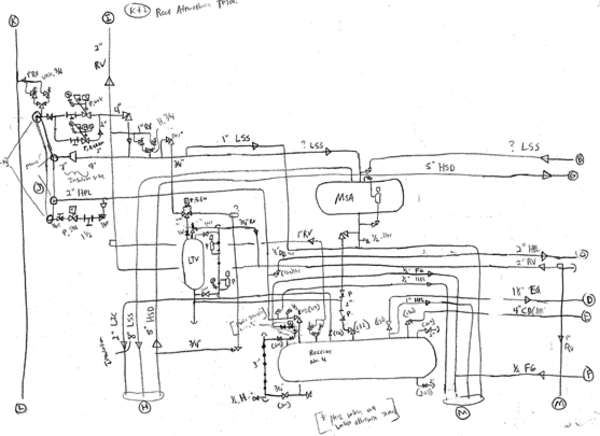P&IDs and Training (Part 5)
We advocate that P&IDs be included in the training program for operators of PSM processes. Due to the complexity of diagrams, it is important for operators to regularly interact with P&IDs to improve their ability to use them. Here are some suggestions on how to incorporate P&IDs into operator training:
- Operator Sketch – Give an operator a pencil, paper, and clipboard. Challenge him to sketch the P&ID of a single component from scratch. Once completed, compare the hand-drawn P&ID to the “official” drawing and note any differences. This type of training can be expanded to include multiple components as the operator gains competency in understanding P&IDs.

- Scavenger Hunt – Place a ribbon on several valves and note the valve numbers on the P&ID. Inform the operator which valves you have tagged and task him with retrieving the ribbons. This exercise will demonstrate whether an operator can use a P&ID to locate specific valves.
- Identify Mistakes – Create a modified P&ID of your system that incorporates inaccuracies. Assign an operator the responsibility of auditing the P&ID and see how many of the errors he can discover. Examples of modifications that can be made are:
- Reverse flow direction arrows
- Remove valves
- Move pipeline connection points
- Rename components
- Assign Annotations – Each component and pipe on a P&ID will be annotated with specifications and service abbreviations. Remove the annotations from the drawing and have an operator assign each missing annotation. This task will test an operator’s knowledge of component names and pipe service abbreviations. An example of this type of activity (including the answer key) for a generic ammonia refrigeration system can be downloaded here.
- SOPs and P&ID – Ask an operator to review an SOP. Where an SOP action refers to a valve or system component, require the operator to mark the component on the P&ID using a highlighter. This activity will verify that P&IDs and SOPs are in agreement and will improve the operator’s familiarity with both documents.
This is Part 5 of a series on P&IDs. You can access previous blogs in this series below:
- Part 1: Introduction to P&IDs
- Part 2: P&IDs and SOPs
- Part 3: P&IDs and PHAs
- Part 4: P&IDs and Emergencies

Leave a Reply